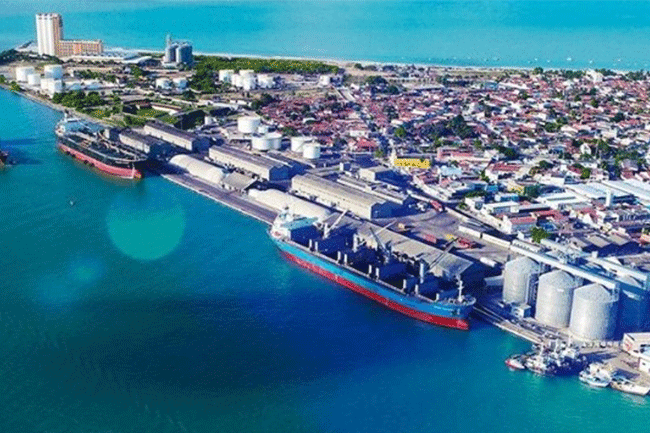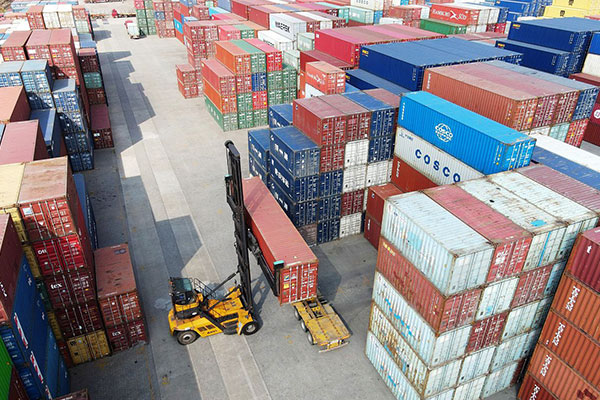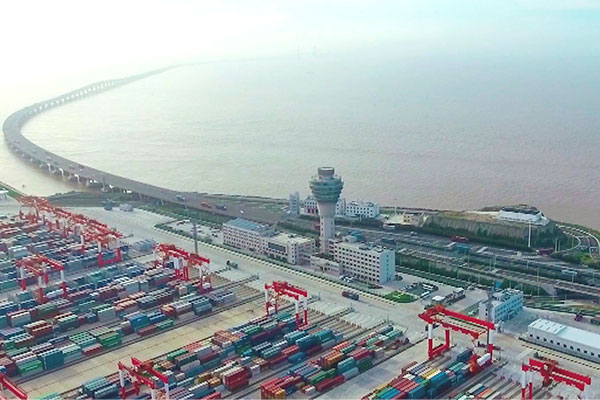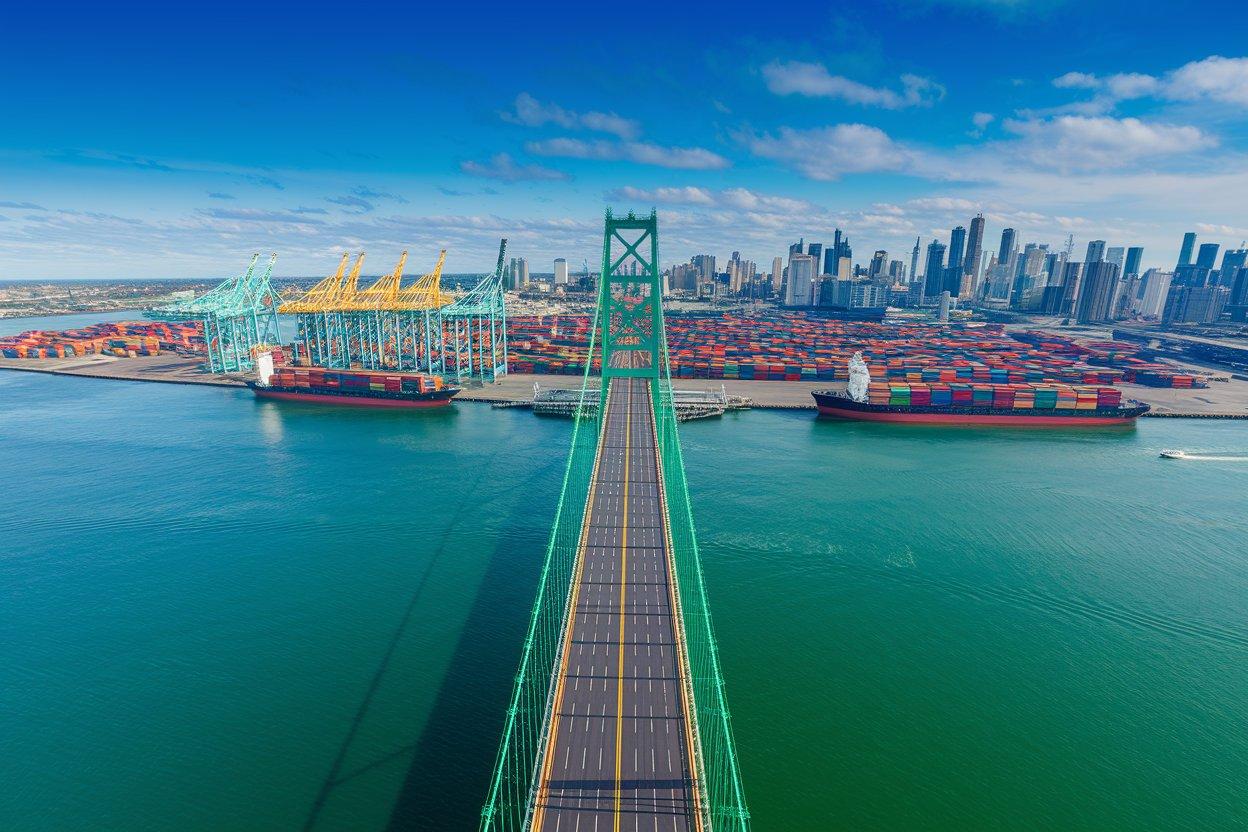- Shanghai Zhongshen International Trading Co., Ltd. – Your reliable partner with 20 years of import/export agency service expertise.

Introduction: Opportunities and Challenges in the Japanese Import Seals Market
In the global industrial supply chain, Japanese sealing components play a pivotal role across various industries due to their exceptional quality and advanced technology. From automotive manufacturing to mechanical equipment, and from the electronics industry to the chemical sector, Japanese sealing components are highly favored by global buyers for their high precision, reliability, and long service life. However, importing Japanese sealing components is no easy task. Under the complex landscape of international trade, importers must navigate numerous challenges while also seizing the opportunities they present. For professional...foreign tradeFor agency companies, how to leverage their own advantages to assist importers in efficiently completing the import process is a topic worthy of in-depth discussion. This article will focus on?Zhong Shen?From a professional perspective, we will analyze the key points related to Japanese imported seals for you.
Challenges and Opportunities in the Context of International Trade
The current international trade situation is complex and ever-changing, presenting both opportunities and challenges for the Japanese import sealing components business. From the perspective of challenges, the rise of trade protectionism has led to increasing tariff and non-tariff barriers. For instance, some countries impose high import tariffs or introduce stringent technical standards and certification requirements to protect their domestic sealing components industry, thereby raising import costs and difficulties. Additionally, the lingering effects of the global pandemic continue to cause disruptions in supply chains,?Ocean shipping?Price fluctuations are significant, and the timeliness and stability of logistics and transportation are being tested.
But at the same time, opportunities coexist. With the gradual recovery of the global economy, the demand for seals in various industries is showing an upward trend. Especially in emerging industries such as...?New Energy?In fields such as automobiles and high-end equipment manufacturing, the demand for high-performance seals is even more urgent. As a leading producer of seals, Japan has unique advantages in meeting the needs of these emerging industries. Moreover, the advancement of regional trade agreements has also brought convenience to import businesses. For example, the implementation of RCEP provides more favorable tariff policies and more convenient trade rules for trade between China, Japan, and other member countries, helping to reduce import costs and improve trade efficiency.
Professional document processing
In the process of importing Japanese seals, document handling is an extremely critical step. Accurate and timely document preparation not only ensures smooth customs clearance of goods but also avoids delays and penalties caused by documentation issues.
- Commercial Invoice: A commercial invoice isImport customs declarationOne of the core documents. It should specify in detail the name, specifications, quantity, unit price, total price, and other information of the sealing components, and these details must align with the contract and the actual goods. The description of the goods on the invoice must be accurate and clear to facilitate proper classification by customs and to determine the applicable tariff rates. For instance, sealing components made of different materials or intended for different uses should be distinctly differentiated on the invoice to avoid misclassification, which could lead to discrepancies in tariffs.
- B/L: The bill of lading, as a document of title and proof of the contract of carriage, is of paramount importance. When importing Japanese seals, an ocean bill of lading is typically used. The importer or their agent must ensure the accuracy of the bill of lading details, including the shipper, consignee, notify party, description of goods, quantity, vessel name and voyage, loading and discharge ports, among others. Special attention should be paid to the endorsement of the bill of lading—if it is an order bill of lading, it must comply with...?L/C?Or the trade contract requires proper endorsement to ensure the smooth transfer of the right to take delivery.
- Packing list: The packing list provides detailed information on the specific conditions of the seals in each package, including quantity, specifications, weight, volume, etc. It facilitates customs inspection of the goods and serves as an important reference for importers to verify the shipment. The packing list should be prepared clearly and comprehensively, with detailed descriptions of the distribution of seals of different specifications within the boxes, enabling customs and the consignee to quickly grasp an overview of the goods.
- Certificate of OriginBookUnder the current international trade environment, the Certificate of Origin is crucial for enjoying preferential tariff treatment. If Japanese seals comply with the relevant rules of origin, importers may request exporters to provide corresponding Certificates of Origin, such as FORM A or RCEP Certificates of Origin. With these certificates, importers can benefit from lower tariff rates during customs declaration, thereby reducing import costs. When applying for a Certificate of Origin, it is essential to ensure that the goods meet the relevant origin criteria, such as regional value content and processing requirements, and to provide accurate supporting documentation.
Efficient logistics arrangements
The logistics process directly determines whether Japanese sealing components can arrive at their destination on time and safely. Professional logistics arrangements not only ensure the timeliness of cargo transportation but also effectively control logistics costs.
- Selection of transportation methods: Importing seals from Japan, sea freight is the most commonly used mode of transportation. Sea freight offers the advantages of large capacity and low cost, making it suitable for bulk cargo shipments. For some urgent orders, one may also consider...?Air freight?Air freight is fast but costly, making it suitable for high-value, small-sized, lightweight sealing components with extremely high timeliness requirements. When selecting a transportation method, importers need to comprehensively consider factors such as the characteristics of the goods, delivery time, and cost. For instance, if the sealing components are urgently needed for production line replacements, air freight may be the better choice; whereas for planned bulk purchases, sea freight is more cost-effective.
- Ocean Freight Booking: After confirming ocean shipping, it is necessary to book a shipping space with the shipping company in advance. When booking, accurate cargo information must be provided, including weight, volume, packaging type, etc., so that the shipping company can arrange suitable space. At the same time, attention should be paid to the sailing schedule and voyage to select the appropriate shipping company and route. Different shipping companies vary in terms of service quality, schedule stability, and pricing. Importers or their agents should conduct a comprehensive evaluation based on actual circumstances. For example, certain shipping companies offer more frequent and stable routes to specific ports in Japan, which is an important consideration for importers requiring regular replenishment.
- Cargo InsuranceTo ensure the safety of goods during transportation, purchasing cargo insurance is essential. Importers can select appropriate insurance clauses and coverage amounts based on factors such as the value of the goods, mode of transport, and shipping routes. Common marine cargo insurance clauses include Free from Particular Average (FPA), With Particular Average (WPA), and All Risks. Importers should choose the appropriate insurance type according to the characteristics of the sealed items and the risk assessment of transportation. For example, if the sealed items are fragile, it is advisable to opt for All Risks to obtain more comprehensive coverage.
- Customs clearance and distribution at the destination port: Upon the arrival of goods at the destination port, timely customs clearance operations are crucial. Professional foreign trade agency companies should be familiar with the customs clearance procedures and regulations of the destination port, prepare complete customs clearance documents, and ensure the swift clearance of goods. After customs clearance is completed, the delivery of goods should be promptly arranged to safely transport the sealed items to the location designated by the importer. For sealed items requiring special storage conditions, such as moisture-proof, dust-proof, or high-temperature-resistant measures, it is essential to ensure that these requirements are met during transportation and storage to guarantee that product quality remains unaffected.
VTB in the Russian market?Foreign exchange settlement?Advantages
As a significant industrial market, Russia also has a certain demand for Japanese sealing components. When Zhongguo Trade assists importers in conducting business to import Japanese sealing components into Russia, it holds unique advantages in terms of foreign exchange settlement.
- Introduction to VTB Bank: VTB Bank is the second largest bank in Russia and holds a significant position in the Russian financial market. Partnering with VTB Bank offers numerous conveniences in foreign exchange settlements for trade with Russia.
- Foreign exchange settlement process: In the trade process of importing Japanese seals and selling them to Russian customers, after the goods are delivered and the relevant shipping documents are obtained, the importer can conduct foreign exchange settlement operations through ZhongShen International Trade and VTB Bank. First, the importer needs to provide the Russian customer with accurate invoices, bills of lading, and other documents as stipulated in the trade contract. Upon receiving and verifying the documents, the Russian customer will transfer the payment to the designated account at VTB Bank. After receiving the funds, VTB Bank will settle the foreign exchange for the importer based on the daily exchange rate and relevant regulations. Compared to other banks, VTB Bank offers a more streamlined process and faster foreign exchange settlement in Russia-related trade, effectively shortening the importer's capital recovery cycle. For instance, in some routine foreign exchange settlement transactions, VTB Bank can complete the operation within 1–2 working days, whereas other banks may take 3–5 working days. This provides a significant advantage for importers with high demands for capital turnover.
Southeast Asian marketImport and exportProcess and Solution
Southeast Asia is also one of the important markets for Japanese sealing components. Below is a detailed introduction to the import and export procedures and related solutions for importing sealing components from Japan to the Southeast Asian market.
- Import Process
- Market research and supplier selectionBefore importing, the importer needs to conduct thorough market research on the demand in Southeast Asia, understanding the local market size, competitive landscape, and customer needs for sealing components. At the same time, high-quality Japanese sealing component suppliers should be screened through various channels, such as attending industry exhibitions, utilizing B2B platforms, and seeking recommendations from peers. When selecting suppliers, factors such as product quality, price, delivery time, and after-sales service should be comprehensively considered.
- Sign the Contract: Negotiate with the selected Japanese supplier on terms such as the specifications, quantity, price, delivery period, payment method, and quality standards of the seals. Upon reaching an agreement, a formal trade contract shall be signed. The contract should clearly define the rights and obligations of both parties to avoid disputes in the later stages. Special attention should be paid to the setting of quality inspection clauses and dispute resolution clauses in the contract. For example, it should stipulate that upon the goods' arrival at the destination port, a third-party inspection agency recognized by both parties will conduct quality inspections. If any quality issues arise, they shall be resolved according to the methods agreed upon in the contract.
- Application for Import License: Some Southeast Asian countries may require import licenses for specific products. Importers should familiarize themselves with local regulations in advance to determine whether an import license is necessary and prepare the required documents for application accordingly. For instance, in Indonesia, certain seals related to safety, environmental protection, and other fields may require an import license. The application process involves submitting detailed product information, importer qualification certificates, and other relevant documents, which may take several weeks to process. Therefore, it is essential to plan ahead.
- Transportation and Insurance Arrangements: As mentioned earlier regarding the logistics arrangements, select the appropriate transportation method to ship the sealed components from Japan to the destination port in Southeast Asia, and purchase the corresponding cargo insurance.
- Customs clearanceAfter the goods arrive at the destination port in Southeast Asia, the importer or their agent must complete customs clearance in accordance with local customs regulations. Required documents for clearance include the commercial invoice, bill of lading, packing list, and certificate of origin, among others. Additionally, it is essential to ensure that the goods comply with local quality, safety, and environmental standards. Customs requirements and inspection methods may vary by country. For example, in Vietnam, customs inspections are relatively stringent, and some goods may undergo sampling tests. Therefore, importers should prepare in advance.
- Pickup and Sales: After customs clearance is completed, the importer can take delivery of the goods and proceed with sales according to the market plan. During the sales process, it is essential to establish a robust after-sales service system, promptly address customer feedback, and enhance customer satisfaction.
- Solution
- Addressing Regulatory Differences: The regulatory policies vary significantly across Southeast Asian countries, and importers should fully understand local regulations before conducting business. With extensive experience, ZhongShen International Trade can provide regulatory consulting services to importers, assisting them in developing import plans that comply with local regulations. For instance, regarding the quality standard requirements for seals in different countries, ZhongShen International Trade can help importers communicate with Japanese suppliers to ensure the products meet local requirements.
- Logistics Optimization: In response to the complex geographical environment and diverse logistics conditions in Southeast Asia, ZhongShen International Trade can enhance logistics efficiency and reduce costs by integrating logistics resources, optimizing routes, and selecting suitable logistics partners. For instance, in countries with numerous islands, combining appropriate feeder shipping routes with inland transportation methods ensures timely delivery of goods to customers.
- Risk Management: International trade involves various risks, such as exchange rate risk, market risk, and policy risk. ZhongShen International Trade can assist importers in risk assessment and management by setting reasonable price terms, employing exchange rate hedging, and other methods to mitigate the impact of risks on business operations. For instance, when signing trade contracts, appropriate price adjustment clauses can be adopted to address cost fluctuations caused by exchange rate volatility.
Product Certification Service Assistance
During the process of importing Japanese seals, product certification is an indispensable step. Different countries and regions may have varying certification requirements for seals, such as the CE certification in the European Union and the UL certification in the United States. Although ZhongShen International Trade does not directly provide certification services, we will fully inform customers of the required certifications and assist them in completing the relevant certification procedures.
- Certification Information Provision: ZhongShen International Trade, leveraging its familiarity with trade regulations across various markets, provides importers with timely and accurate certification information for sealing components required in target markets. This includes detailed aspects such as the types of certifications, their applicable scopes, certification procedures, and the relevant certification bodies. For instance, when an importer plans to sell Japanese sealing components in the European market, ZhongShen International Trade will inform them of the relevant CE certification requirements, including the applicable directives and harmonized standards for the products, as well as the certification modes, thereby helping the importer gain a comprehensive understanding of the certification process.
- Assist in preparing certification documents: The certification process requires the submission of a large number of documents. China Shen International Trade can assist importers in preparing the relevant documents, such as organizing technical data for sealed components, product manuals, quality control documents, etc., to ensure compliance with the certification body's requirements. Additionally, we guide importers in communicating with Japanese suppliers to obtain necessary supporting documents, such as raw material source certifications and production process records, laying the groundwork for a smooth certification approval.
- Certification Process Guide: During the certification application process, ZhongShen International Trade can provide importers with procedural guidance. From selecting a certification body, submitting the application, product testing, to finally obtaining the certification certificate, detailed guidance and advice are provided at every stage. For example, informing importers about the characteristics and advantages of different certification bodies to help them choose the appropriate one; reminding importers to pay attention to the preparation work for product testing to ensure the product passes the test in one go.
Conclusion
Amid the complex landscape of international trade, importing Japanese seals faces numerous challenges but also holds abundant opportunities. Through professional document handling, efficient logistics arrangements, leveraging advantages such as VTB settlement in the Russian market, and gaining in-depth understanding of import-export processes and solutions in markets like Southeast Asia, along with providing assistance in product certification, ZhongShen International Trade is committed to offering comprehensive, high-quality foreign trade agency services. We aim to support importers in achieving success in the Japanese seals import business and fostering mutual benefits. In the future of international trade, continuously monitoring market trends and optimizing services will be key to navigating changes and seizing opportunities.
Core Business
Contact Us
Email: service@sh-zhongshen.com
Recommended for You
Contact via WeChat

? 2025. All Rights Reserved.









